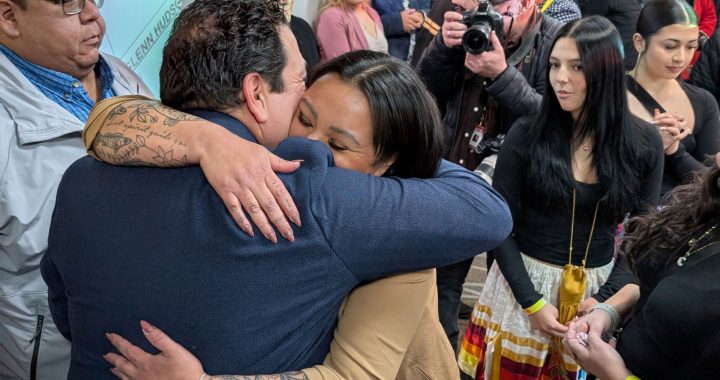Indian Affairs out of touch with on-reserve lending realities: credit union prez
A controversial Indian Affairs program accused of giving mainstream financial institutions a “golden brick road” into the on-reserve lending sector has been hit with a major setback after one of seven firms picked to administer government-backed loans decided to pull out.
APTN National News
OTTAWA–A controversial Indian Affairs program accused of giving mainstream financial institutions a “golden-brick road” into the on-reserve lending sector has been hit with a major setback after one of seven firms picked to administer government-backed loans decided to pull out.
Assiniboine Credit Union’s board decided to withdraw from Indian Affairs’ $15.5 million loan guarantee program after a meeting last week.
The credit union’s president Al Morin said the pilot loan-loss reserve program to backstop loans for on-reserve businesses had been handicapped by Indian Affairs’ decision to exclude Aboriginal lending firms with long histories of working with on-reserve businesses.
Morin also said the program was also out of touch with the actual on-the-ground borrowing realities for on-reserve businesses.
“The very Aboriginal communities we sought to serve were feeling disenfranchised by (the department’s) decision to offer the loan-loss reserve only to mainstream financial organizations,” said Morin. “To find it was disempowering rather than empowering was disappointing.”
Morin said his firm did not issue one loan in the last two years of its involvement with the program. Morin said he believed the department used an outdated structure for the program to meet a need that no longer exists.
“The barriers are not as significant as they were many years ago,” he said. “There are agreements that can be crafted where you can secure on-reserve assets. The intent of the program is not nearly as powerful now as it would have been 20 years ago, or 10 years ago.”
Morin said his firm was backing Tribal Wi-Chi-Way-Win Capital Corporation’s campaign to force the department into including Aboriginal lending banks, called Aboriginal Financial Institutions (AFIs), in an overhauled program.
An Indian Affairs spokeswoman said the department was “unaware of any action or intention” by the credit union to pull out of the program.
Morin said his company was in the process of informing the department of its decision.
The Manitoba credit union’s decision is another blow to the department on the issue.
Winnipeg-based TWCC has taken the department to federal court arguing Indian Affairs failed to properly consult when it decided to freeze AFIs out of the program in favour of mainstream lenders.
The department picked Assiniboine, Desjardins Group, Business Development Bank of Canada, Affinity Credit Union, First Nations Bank, Servus Credit Union and VanCity Savings Credit Union to take part in the program.
Indian Affairs set aside $15.5 million to finance loan guarantees for the selected firms.
It remains unclear why the department didn’t include AFIs when the firms were created and designed to provide loans to on-reserve businesses which typically have to work harder to borrow money from banks.
The Conservative Aboriginal affairs caucus sent a letter last year asking former Indian affairs minister Chuck Strahl to rethink the program.
Created 20 years ago with $200 million in seed capital, there are now 57 AFIs across the country and they have written about 36,000 loans worth over $1.4 billion.
Alan Park, chief executive officer of TWCC, said the department was putting Aboriginal lenders in jeopardy by giving mainstream lenders a “golden-brick road” into the on-reserve lending sector through the program.
“When there is a level playing field we all win,” said Park, in a statement praising Assiniboine’s decision.
TWCC was established in 1993 and has since offered more than $34 million in loans to 45 First Nations communities in Manitoba. While it began with only three employees, it has 150 today.
According to the department’s own figures, only about$4 million has been issued under the loan-loss reserve program to Aboriginal businesses since its inception in April 2009.











The 21 century type of slavery is financial slavery. Know the road you walk on and if not, be careful!
They want to put First Nations back into captivity. Captivity is debt.nnHarper wants to make giving loans to FNs easy so that FNs can play “the game” like the big boys do.nnThere’s no pride in taking on debt.nnOil, gold, and minerals are being taken out of the land and the poor hardly benefit. The banks are getting richer. Canada is going to become just like the States pretty soon. High unemployment. High debt. The poor suffering under oppression from creditors. All while the banks and big businesses get richer. The rich will get richer.nnInterest rates are low, low, low. Of course it’s easy to get credit in this sort of economic atmosphere, especially with the Canadian economy praised as one of the strongest in the world. But, it’s all an illusion. What does it all mean to the poor? Nothing. The poor is not going to get rich.nnHere’s the point. First Nations will be laden with debt from the white man banks. Sooner or later, the interest rates will go up, and FNs will be faced with extraordinary payments on the debt that was so easy to get into in the first place.nnFNs banks will help FNs in the coming economic storms ahead. But the white man banks will just want their money.
Its just more pozi games being built to control systems down the road…. we need to sling producs and service to each other… we have a right to trade with each other… or it seen as a concentration camps across the land…nnIndian Affairs over loads rulership…nyoutube.com/watch?v=FJeUY8aBEyw